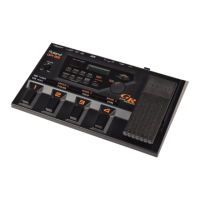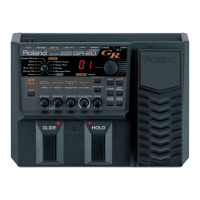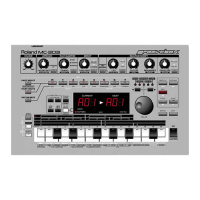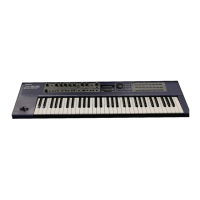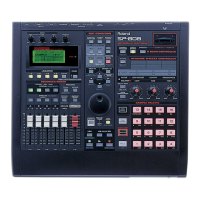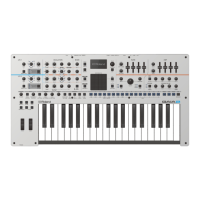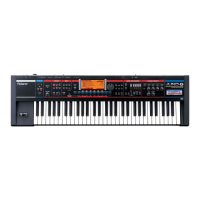As the above figure shows, pattern information is
made up only of information on the timing relation-
ship with strings played before and after, and the
force of sound generation. It does not include any
information such as the length of the end of the
sound, the tempo, how may notes per grid the sound
is interpreted to be, or the like.
Information such as this is determined by ARPEG-
GIO/harmony items such as “A-RHYTHM,” “A-
DURATION,” and “A-TEMPO.” Changing these set-
tings can create a different ambience even with the
same pattern.
Turning Arpeggiator On and Off
During a performance, you can toggle arpeggios on
and off by pressing pedal 4 (CTRL ARP/HAR) while
in the Pedal Effect mode (or when PATCH INC/DEC
BY S1/S2 has been selected while in the Play mode).
You can also switch arpeggios on and off in the same
way while in the Edit mode (except during the “A-
TEMPO” setting, which will be described later).
When Arpeggiator is turned on, the five-point indica-
tor lights up green. (Red indicates Harmonist.)
Each patch has a setting that determines whether
Arpeggiator is on or off. In the Edit mode, you can
save the present state (on or off) by setting the PARA-
METER SELECT dial to “WRITE PATCH?” and
pressing [+] and [-] at the same time. This state is
then enabled the next time you call up the patch.
✽
If you try to change an arpeggio-related value or setting
(“ARPEGGIO/(harmony) SEL,” “A-RHYTHM,” “A-
DURATION,” or “A-TEMPO”) for a patch with
Arpeggiator off, Arpeggiator is turned on automatically
to let you check the effect.
Selecting Tones to Be
Arpeggiated (ARPEGGIO SEL)
The setting “ARPEGGIO/harmony SEL” (Arpeggio/
Harmony select) for each patch determines whether
the first tone, the second tone, or an external sound
generator is arpeggiated by Arpeggiator. Try making
actual changes to this setting for the preset patches,
and listen to the results.
<Verifying How ARPEGGIO SEL Works>
1. Choose patch F63 (combined brass and synth horn
tones), which gives results that are clear and easy
to verify.
2. Press [EDIT/PLAY] to enter the Edit mode, then
set the EDIT TARGET dial to “ARPEGGIO/har-
mony” and the PARAMETER SELECT dial to “A”
(ARPEGGIO/harmony SEL).
3. Press pedal 4 to turn on Arpeggiator for patch E63
that you’ve called up.
4. The display shows the current setting, “A.-2” (sec-
ond-tone arpeggio). Play the guitar and make sure
that the arpeggios are applied only to the second
tone (synth horn).
5. Press [-] once to make the display change to show
“A.-1” (first-tone arpeggio). Play the guitar —
only the first tones (brass section) are arpeggiated.
6. Press [+] twice to make the display change to show
“A.-b” (both: arpeggios for both tones). Play the
guitar and make sure that both tones are overlaid
with arpeggios.
Other values that can be chosen with [+] and [-] are as
follows.
ArP
All tones (from the internal sound generator and
the external MIDI sound generator) are arpeggiat-
ed.
A.-1
Only the first tone of the internal sound generator
is arpeggiated.
A.-2
Only the second tone of the internal sound genera-
tor is arpeggiated.
A.-b
This “b” stands for “both,” and means that the first
and second tones are both arpeggiated. (The
external sound generator is not arpeggiated.)

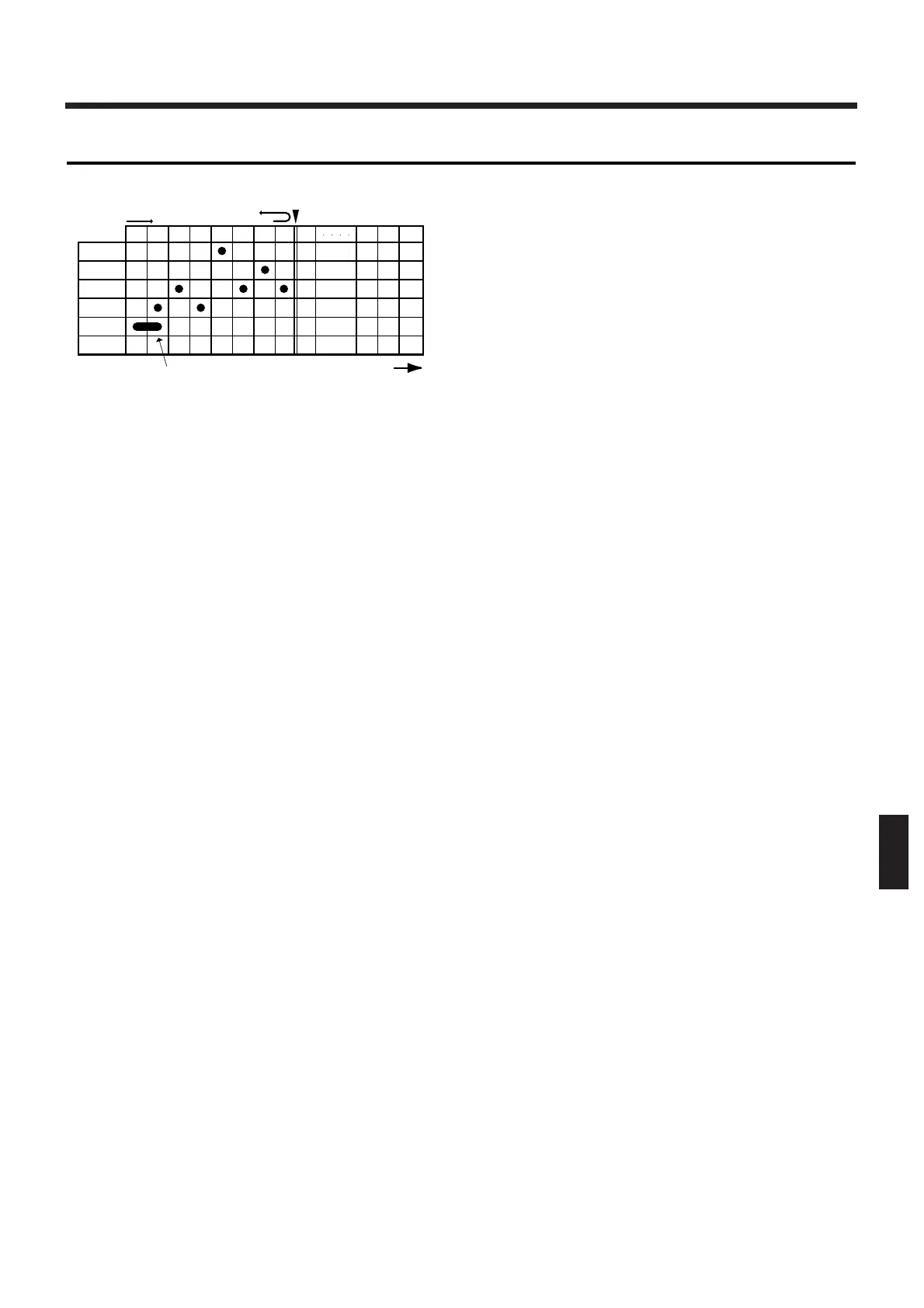